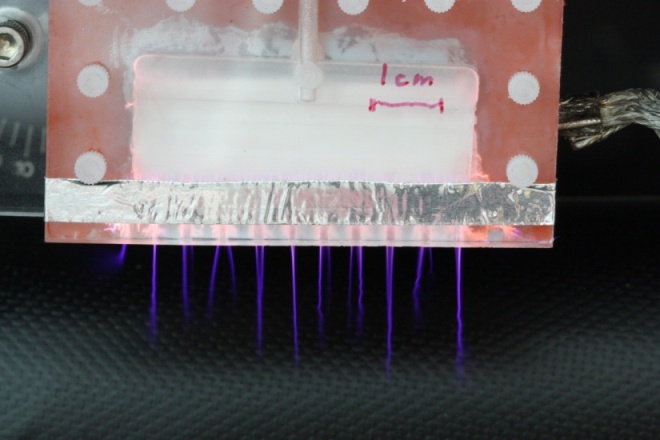Johanna Neuber, B.S.
Graduate research assistantJohanna Neuber is a MS of electrical engineering student at Old Dominion University. She received her BS degree in electrical and computer engineering with a minor in German from the University of Texas at Austin in 2014. Currently, her work is focused on the use of nonthermal plasma for bacterial inactivation. Specifically, at the Frank Reidy Research Center for Bioelectrics, she is investigating the efficacy of a plasma brush for surface sterilization and a microplasma jet for biofilm inactivation, particularly those found in the root canals of teeth.
Research
Plasma Jet for Endodontics:
Bacterial biofilms are notoriously difficult to treat and exhibit increased resistance to many traditional treatment methods such as antibiotics. Root canal biofilms, due to being confined in such a small space, pose a significant problem in endodontics. Current treatment methods include irrigation with harsh chemicals and antimicrobials which are less effective on biofilms than planktonic bacteria [1]. Nonthermal plasma offers an alternative treatment method.
Our work investigates the effectiveness of a nonthermal helium plasma jet in inactivating E. faecalis biofilms. Currently, we are determining optimal treatment protocols for an E. faecalis biofilm on hydroxyapatite (compressed bone) disks due to the difficulty of cultivating biofilms in tubes to mimic the environment of a root canal. Thus far, we have found a He/O2 mixture to be most effective, and will continue to explore possibilities of the device.
Plasma Brush for Surface Sterilization:
We have developed a plasma brush for large area surface disinfection. The device consists of an acrylic housing with a long narrow opening through which gas flows. Channels are cut into the opening to guide the gas flow and create a brush-like array of plasma plumes as seen below.

Possible applications are surface sterilization and inactivation of nosocomial pathogens, such as drug resistant Staphylococcus strains. Current work is being done to optimize the bactericidal effect on S. aureus and A. baumannii. Additionally, we are performing diagnostics to quantify the reactive species that might contribute to this effect.
References:
- Z. Mohammadi, M. K. Soltani, and S. Shalavi, "An Update on the Management of Endodontic Biofilms Using Root Canal Irrigants and Medicaments," Iranian Endodontic Journal, vol. 9, pp. 89-97, 2014.